Here's the Perfect High-Country Hideaway
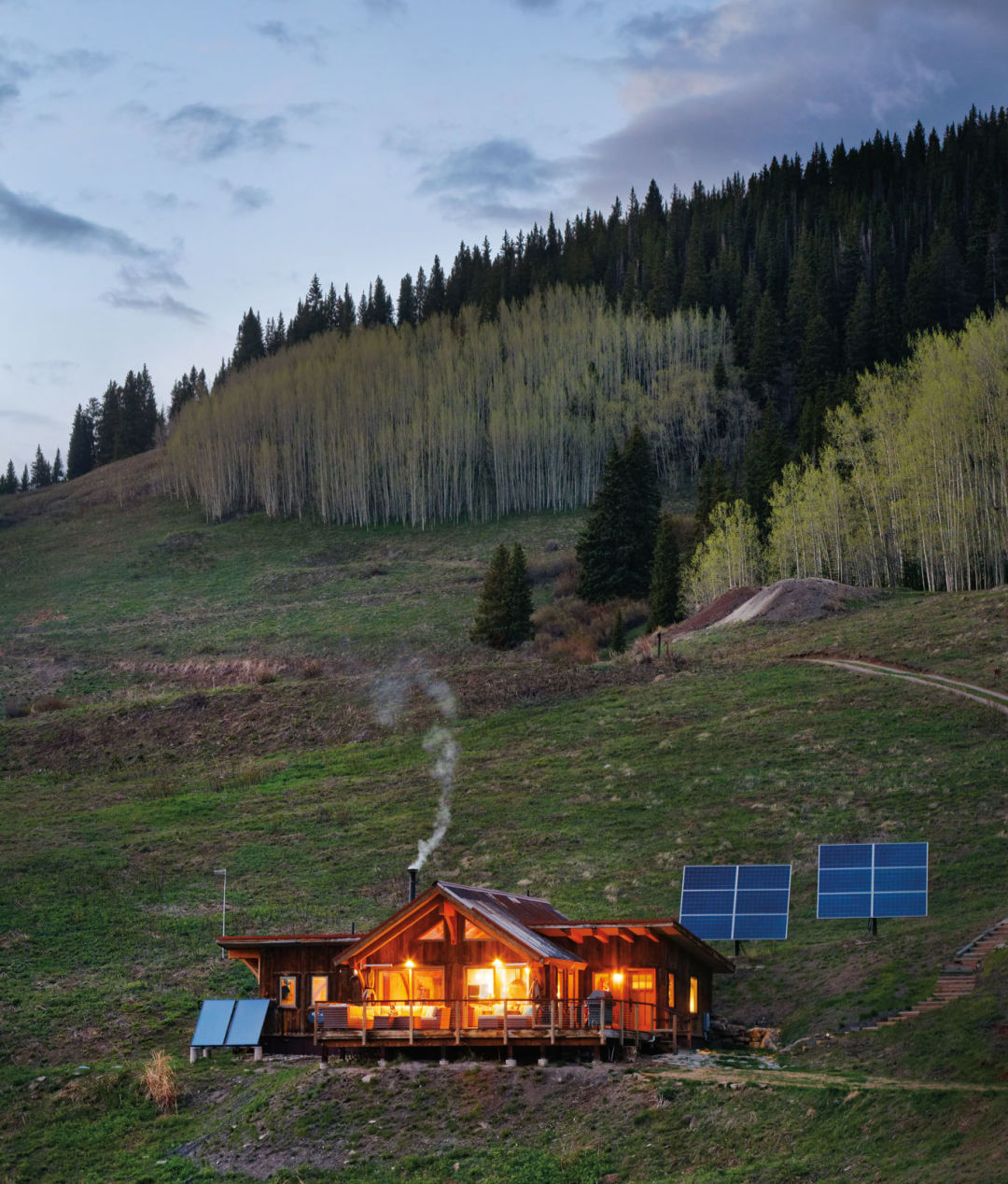
Sitting at 10,420 feet in Little Annie Basin, the house is a model of coziness and energy efficiency.
Most people don’t understand, says Dan Bunta, that it’s not out of hardship or necessity that he and his wife, Mary Manning, live off the grid in a mountainside house, miles from a paved road and accessible only by snowmobile or skis six months of the year.
“I live here because I like living up here, not because I have to,” says Bunta, standing on the expansive, south-facing deck of the couple’s home in Little Annie Basin on the backside of Aspen Mountain, where the unimpeded views include Mount Hayden and Highland Peak.
Bunta and Manning got the opportunity to buy this 37-acre plot 14 years ago, the culmination of a dream to be able to build their own home on the property Bunta had been living on—in a rented one-room, mining-era cabin—since 1989.
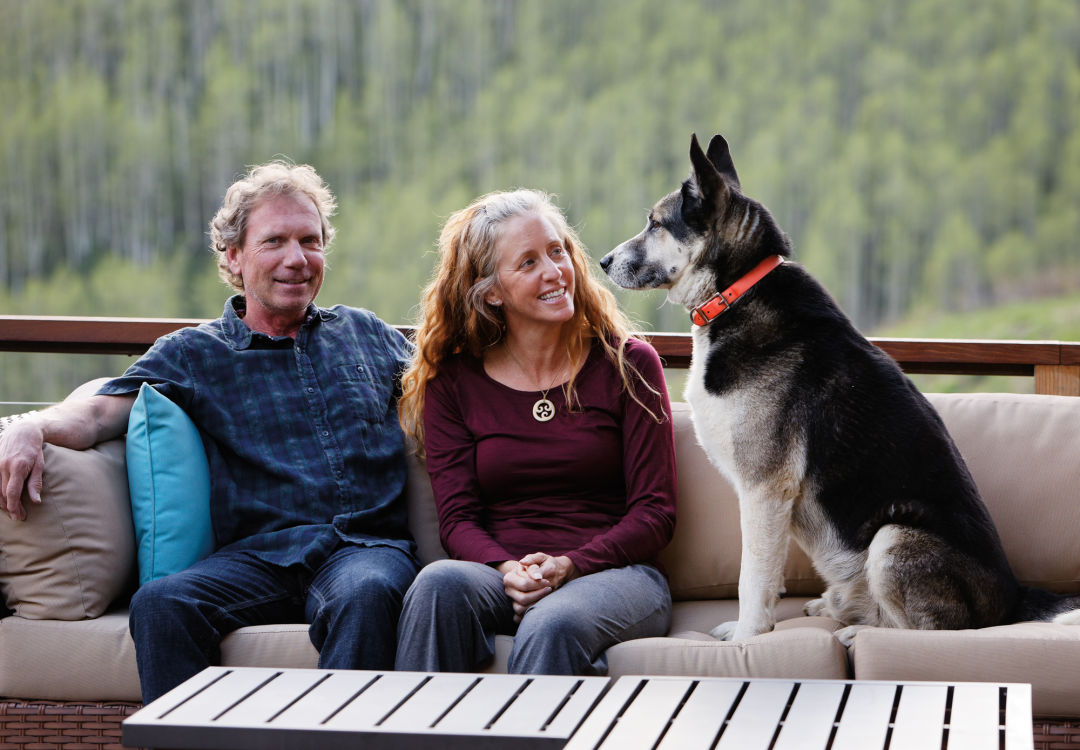
Bunta, Manning, and Doty
There were constraints. Pitkin County’s restrictive rural and remote zoning district, which pertains to the couple’s land, limits homes to 1,000 square feet. And Bunta and Manning worked with an architect from Michigan-based Timbercraft Homes to design a house that would adequately handle heavy snow loads and other considerations of backcountry living.
Bunta, a master carpenter who also guides for the Aspen Skiing Company’s Powder Tours in winter, built a lot of the home himself—a project that took three years but couldn’t be rushed. He was drawn to the aesthetics and practicality of timber-framing, which uses interlocked posts and beams—often exposed inside—for structural support. Bunta and Manning favored the rustic yet contemporary style, which allows for high ceilings and open rooms and doesn’t have the primitive look of a log cabin.
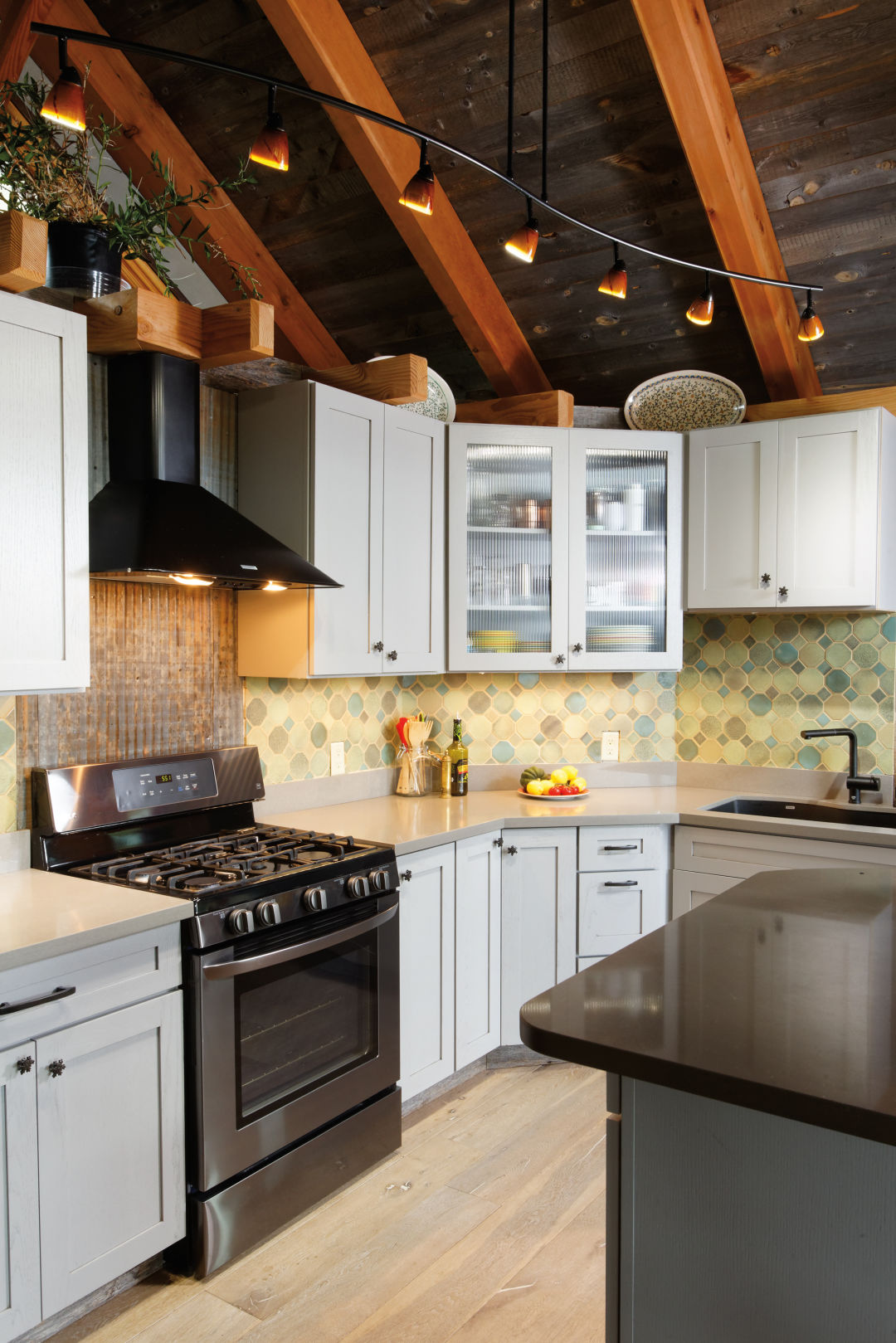
The kitchen, where the snowflake-shaped cabinet knobs, forged by Barz Hardware in Silverton, are staggered (below inset) “because snow doesn’t fall in a straight line,” says Bunta.
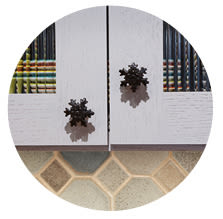
A modified “T” design places the main room—a living, dining, and kitchen area—at the home’s center. Modest wings on either side, each consisting of a bedroom and a bathroom, sit under shed-style, asymmetrical roofs that slant higher on the south-facing side.
In fact, taking advantage of sun and shade—and maximizing overall energy efficiency—influenced every aspect of the house. Bunta and Manning received grants from the Community Office for Resource Efficiency to help defray costs. Two sets of pole-mounted solar arrays and a solar thermal panel installation provide energy for electricity, hot water, and radiant floor heat, while large windows on the south side allow for passive solar warmth (tempered by an outsize roof overhang for shade in summer) along with great views. Combined with Energy Star–certified appliances, this system provides more than enough power year-round—a propane boiler and a wood-burning stove serve as backup—although, as Bunta notes, during “the shortest days of December, you don’t want to be doing laundry on the second day of a snowstorm.”
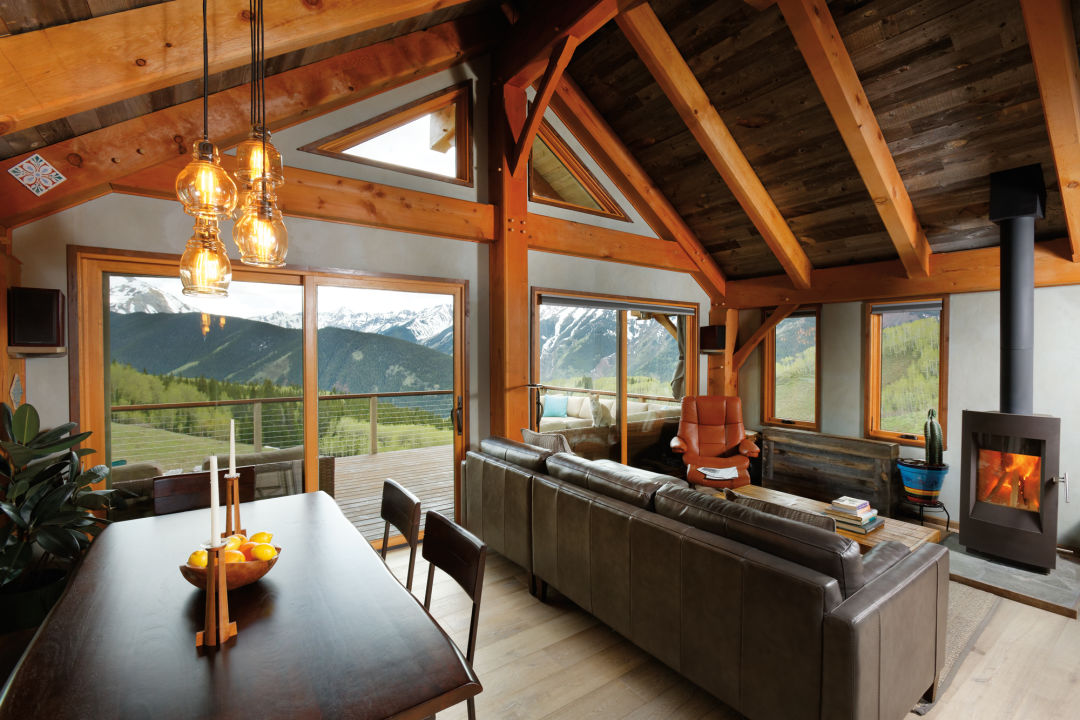
The home’s post-and-beam construction allows for expansive views of the surrounding peaks. Bunta used reclaimed wood for window frames, doors, and baseboard trim.
A tight building envelope protects against the elements at 10,420 feet. Bunta used structural insulated panels, commonly used with timber-frame construction, as well as triple-pane windows and roofing that have among the highest R-ratings (or insulative value) possible.
Being green dovetailed with the logistics of how the couple wanted to live. “The main idea was creating our own electricity up here and not having to haul propane all the time or be a slave to a bigger wood pile,” says Bunta.
Streamlined ease and a low-key vibe also factored into the home’s construction. “We didn’t want to overdo the new house with a lot of things,” notes Manning. “We wanted the architecture to speak for itself. And it’s comfortable; you don’t want to feel like you can’t sit in a chair.”
With no internet service currently available, Bunta built in other techy amenities: a killer sound system and a satellite TV, which automatically slides down into a custom wood cabinet when not in use, a feature that Manning, especially, appreciates.
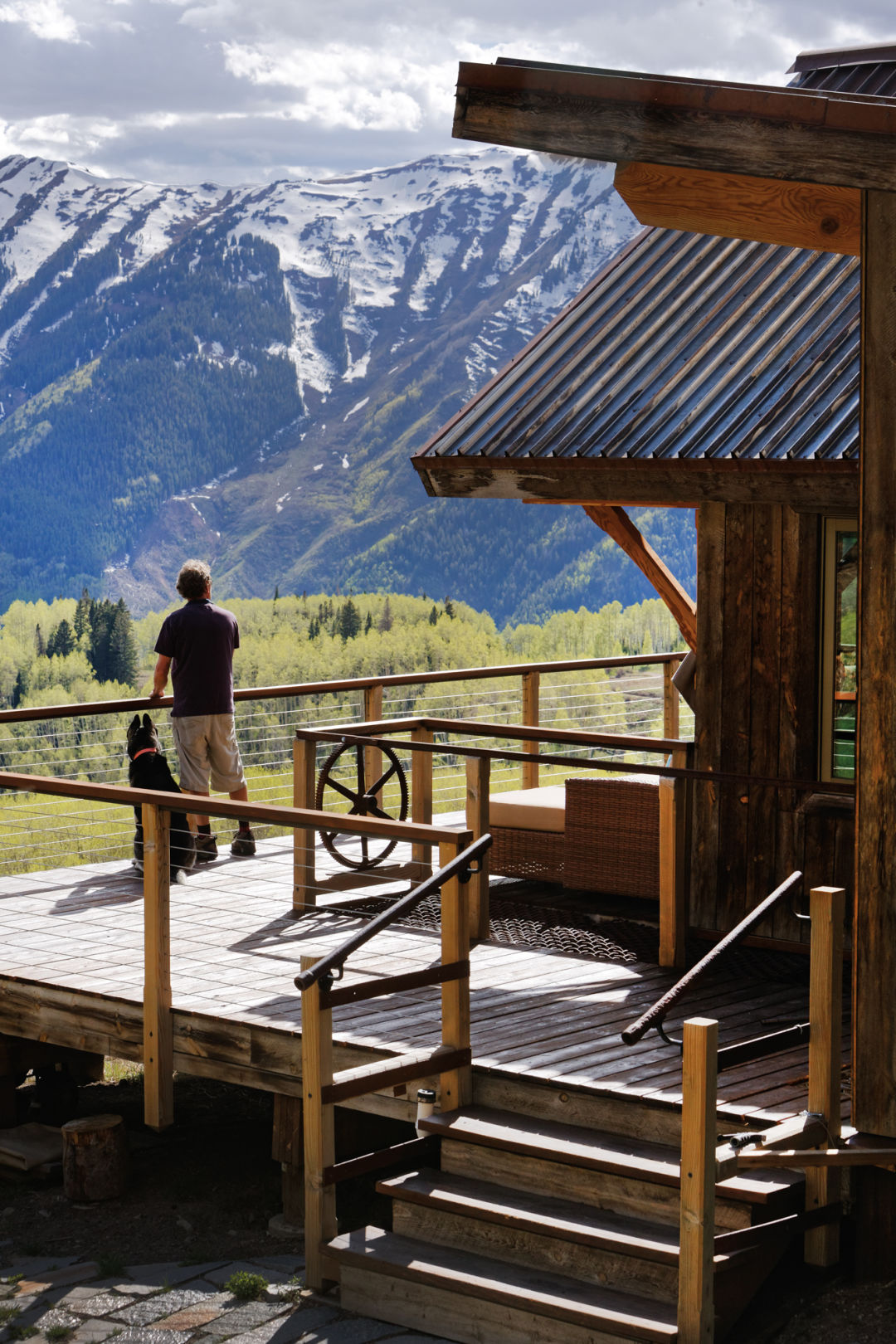
Rather than allow snow and water dripping from the roof to pile up on the deck, Bunta designed a cut-out section for drainage, covering it with a sifting grate from the Little Annie Mine and fashioning a railing out of old ore-cart track.
As with many Aspen-area homeowners, views and location are the ultimate rewards for Bunta and Manning. In mid-April, Bunta said he was ready for the snow to melt off the road so he and Manning could drive to and from home. But in the next breath, he extolled benefits like snowmobiling to the top of Aspen Mountain on a winter morning and being among the first to ski down the front side on his way to the 7:30 a.m. Powder Tours staff meeting, skinning and skiing the backyard in the spring, and summer gondola rides into town for groceries or to meet friends.
Over the course of a year, the open landscape surrounding the home continually evolves—covered by bright green grasses and then by wildflowers in the warm seasons, emblazoned with colors in the fall and blanketed by snow that fills in the hollows in winter and spring, all of it shifting hues as the sun moves higher or lower across the sky.
“I don’t think there’s any other ski area in the US that has a residential area like this,” says Bunta of the remote setting. “It’s the same view, but it’s always changing. We never get tired of it.” Just the way he and Manning like it.













































